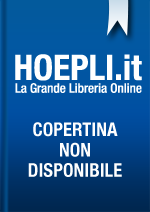Contents: Foreword; Introduction: Mark Blackburn and early medieval monetary history, Rory Naismith, Martin Allen and Elina Screen. Part I Progress in Early Medieval Monetary History: Coins and currency in Viking England, AD 865-954, Gareth Williams; Prelude to reform: 10th-century English coinage in perspective, Rory Naismith; Coinage and currency under William I and William II, Martin Allen. Part II Interdisciplinary Perspectives: XPICTIANA RELIGIO and the tomb of Christ, Martin Biddle; The portrait coinage of Charlemagne, Simon Coupland; M for Mark: the iconography of Series M, variants and the Agnus Dei, Anna Gannon; The stylistic structure of Edward the Confessor’s coinage, Tuukka Talvio; Bovo soldare: a sacred cow of Spanish economic history re-evaluated, Jonathan Jarrett. Part III Use and Circulation of Currency: Byzantine coins in early Medieval Britain: a Byzantinist’s assessment, Cécile Morrisson; Thrymsas and sceattas and the balance of payments, D.M. Metcalf; The use of coin in the Carolingian Empire in the 9th century, Simon Coupland; Monetary activity in Viking-Age Ireland: the evidence of the single-finds, Andrew R. Woods; Vestfold: a monetary perspective on the Viking Age, Svein H. Gullbekk; Currency conversion: coins, Christianity and Norwegian society in the late 10th and 11th centuries, Elina Screen; Islamic and Christian gold coins from Spanish mints found in England, mid-11th to mid-13th centuries, Marion M. Archibald. Part IV Coins and Coin Hoards in Context: A 7th-century Anglo-Saxon solidus pendant of the Cross-on-Steps type found in Kent, Stewart Lyon, with an appendix by Michael Cowell; A small hoard of Burgred pennies from Banbury Castle, Oxfordshire, David Symons; The 1699 Port Glasgow hoard, Hugh Pagan; The Viking invasions 885-889 and the activity of the mint of Rouen, Jens Christian Moesgaard with the collaboration of Michel Dhénin; The Swordless St Peter coinage of York, c.905-c.919, Megan Gooch; The 2003 Glenfaba hoard (c.1030)












